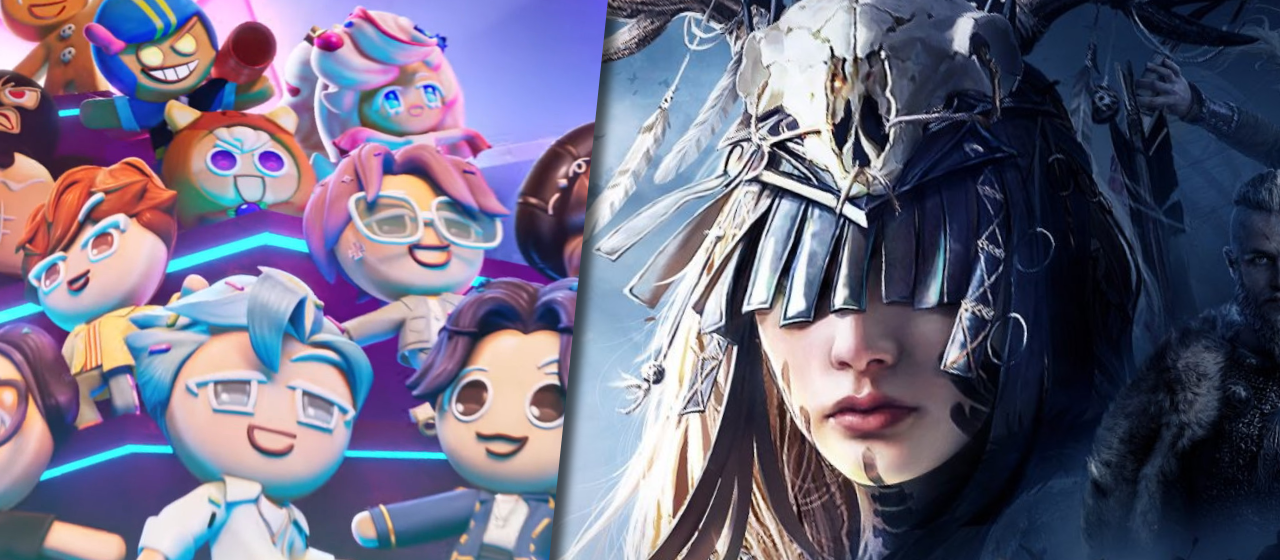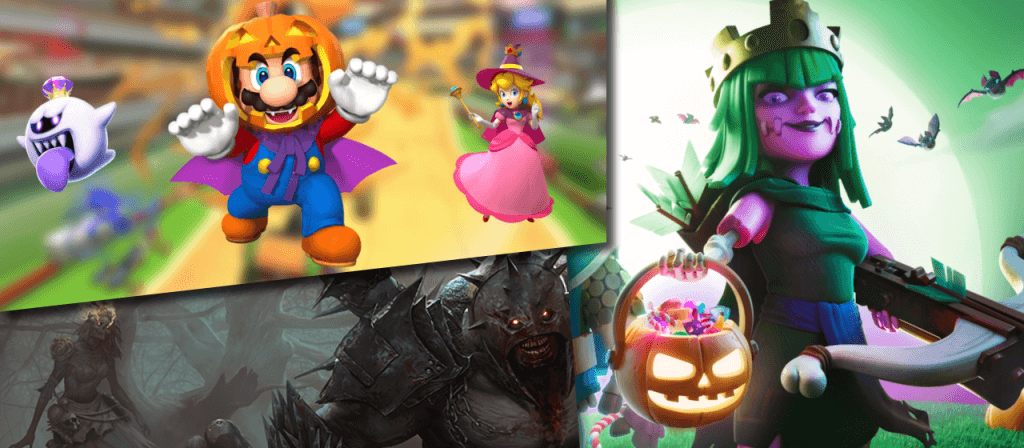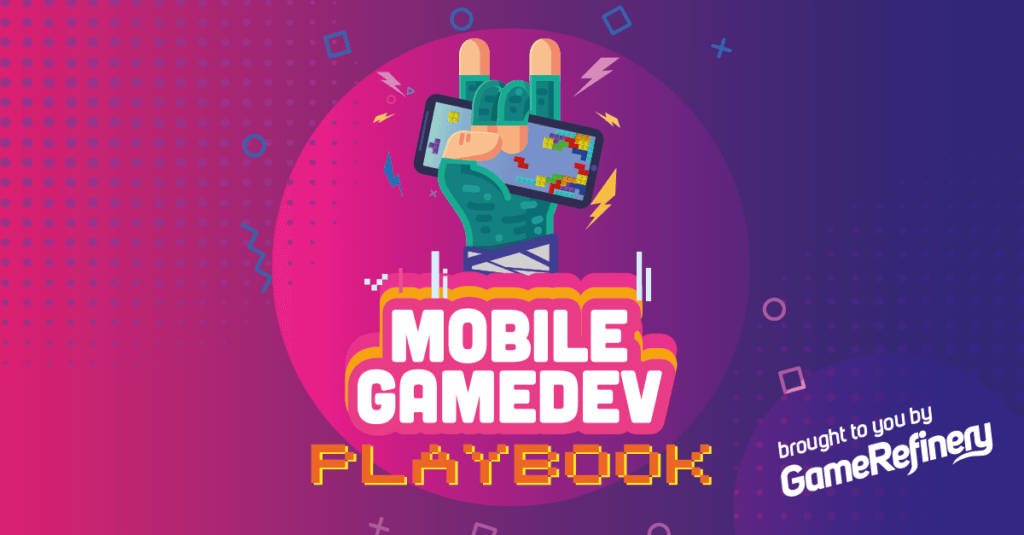If you’re looking for ways to improve player retention for your mobile game, hosting a collaboration event with a well-known franchise as part of your LiveOps might be the answer you’re looking for. Not only are collaboration events a great way to engage players, but they’re also a great way to boost your game’s monetization through the addition of new content, such as event-exclusive cosmetic items and collectibles.
More than half of the top 20% performing games in the Japan iOS market utilize promotional collaboration events to boost their revenue and downloads. In-game collaborations are particularly popular across midcore games as publishers of these games tend to have established contacts they can partner with. As an example, collaboration events are used by more than 70% of the top 10% of highest-grossing games in the China iOS market.


Depending on the type of IP you want to license, collaborations also provide an opportunity to freshen up your narrative elements and gameplay mechanics. As an example, PUBG Mobile’s collaboration with the anime Neon Genesis Evangelion introduced giant Mechs into its battle royale map that would attempt to shoot down players, while Cookie Run Kingdom’s collaboration with the K-pop band BTS saw the action-RPG gacha game adding a rhythm game mode.
There will always be a place in the market for seasonal events and anniversary events, of course, but there’s a growing trend of mobile games now licensing IP from film, TV, anime, celebrities, music, manga and even other games and incorporating that IP into their anniversary and seasonal events. One such example is Garena Free Fire, which celebrated its fifth birthday with an in-game concert featuring none other than the prince of pop, Justin Bieber.
What makes a successful in-game collaboration event?
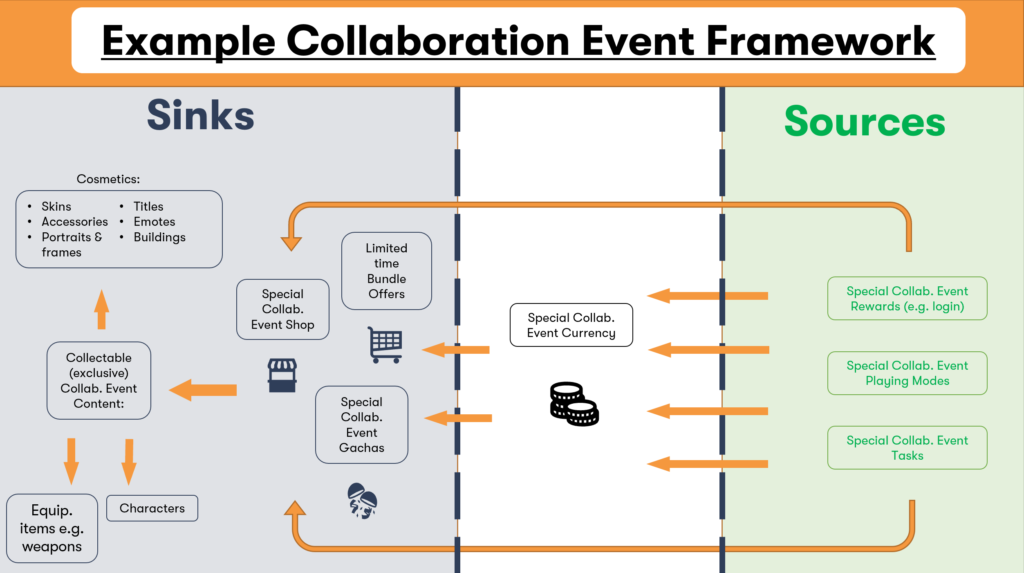
Like any event, in-game collaborations take a lot of planning and there’s a lot you need to consider before you start thinking about how a potential partnership might be monetized and activated.
To start with, you need to make sure that the IP you’re interested in licensing is a good fit for your game. Does it match your target demographic? Will your current players find it interesting? How well does the franchise – if it’s a film or TV show, for example – lend itself to your gameplay mechanics? Does it provide an opportunity to do something different or significantly expand what you’re already doing? What kind of cosmetic items could this partnership introduce into the game and would they suit your game’s world?
All of these questions need to be considered early on as they’ll help you find the best partners to collaborate with. You should also think about the timing of your collaboration and if there are any upcoming events or releases that you can tap into as part of your launch. If you’re planning on collaborating with a TV or anime franchise, this might involve the launch of a new season, film or TV series, such as the mobile game Vikingard collaborating with the TV show Vikings to promote the launch of its spin-off series, Vikings Valhalla.
The best in-game collaboration events are often mutually beneficial. For mobile game developers, collaboration events are an opportunity to engage lapsed players, increase retention rates, add new content and boost monetization. The IP you’re partnering with has an opportunity to reach all of your players with their brands and align their brand with gaming – a sector that more and more companies are interested in.
To figure out what makes a brand collaboration successful, let’s look at some recent examples of in-game collaboration events in mobile games.
Simulation RPG Vikingard collaborates with TV show, Vikings
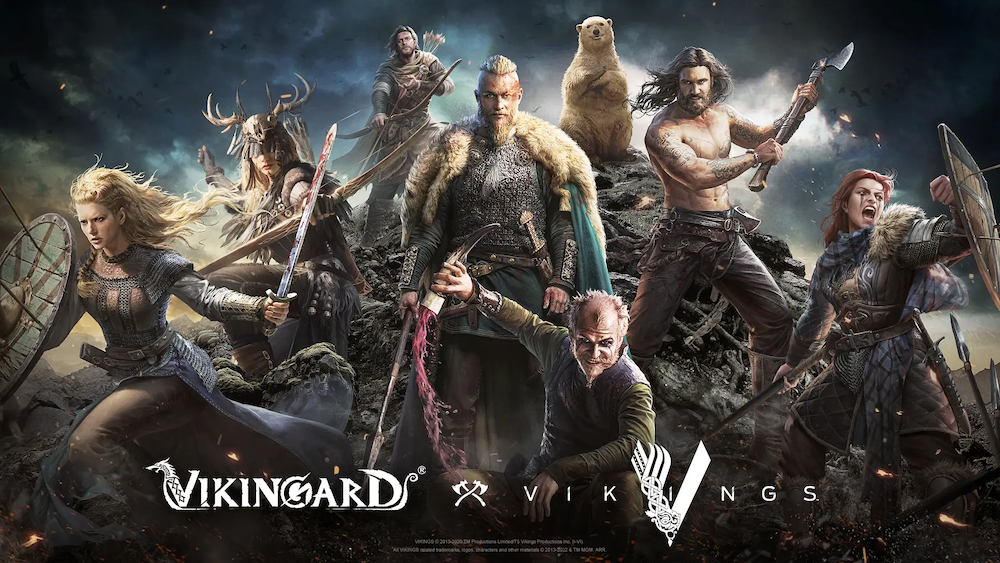
Developed by Netease, Vikingard is a casual simulation RPG set in the Viking era. As well as embarking on an epic Viking voyage and a wide variety of fights, players tend to a kingdom by growing crops and upgrading buildings with construction and management sim mechanics. Netease is certainly no stranger to in-game collaborations and capitalized on the excitement around the launch of Vikings: Valhalla by hosting a collaboration with the TV series, Vikings.
This collaboration pushed Vikingard into a US top-200 grossing spot while leading to a 25% increase in downloads. Largely considered a success, the in-game collaboration introduced a variety of crossover events and several main characters from the TV series, including Ragnar and Lagertha. A new Vikings-themed Battle Pass was also introduced with unique mechanics, as it included three reward tracks rather than the usual two.
New characters could be unlocked in two ways. Players could either complete crossover events to earn character tokens which could then be used to unlock them, or the characters could be purchased directly through IAP bundles. This resulted in a nice mix of monetization elements and also non-monetized content as players were able to gain many of the rewards from the collaboration for free if they just put enough time into the game.
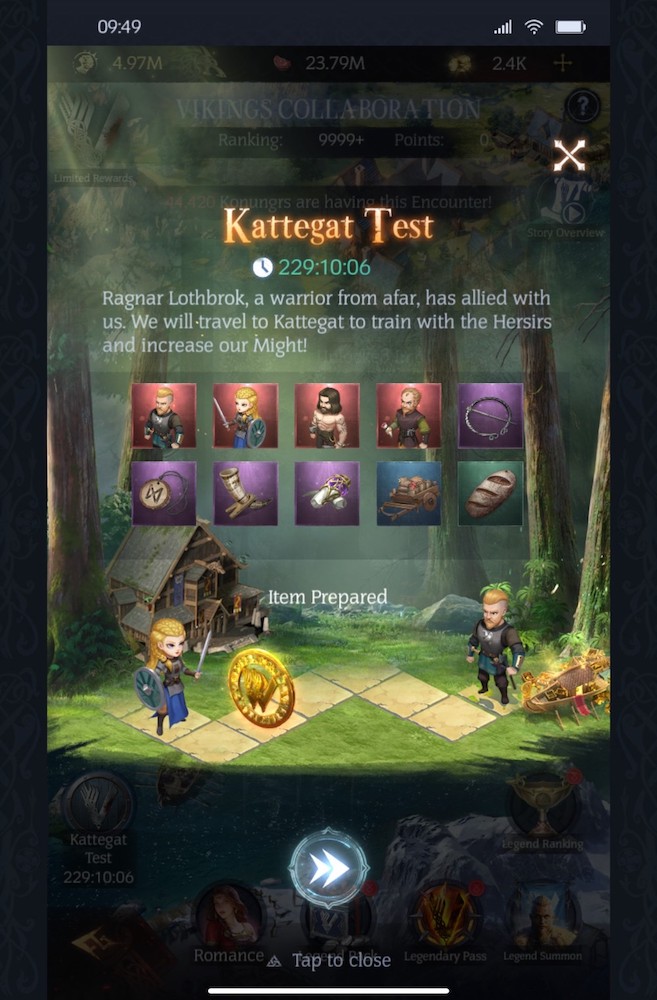
The collaboration was a great fit for both sides, and we were impressed with how detailed the character models were, with many of them looking just like their real actors. One of the most impressive outcomes of this collaboration is that the game has managed to keep consistent daily revenues since the event, which suggests that new players are engaging with the game, re-engaged players are starting to spend again, or a combination of both.
One Piece Treasure Cruise (ONE PIECE トレジャークルーズ) + other mobile games collaborate with One Piece Film Red
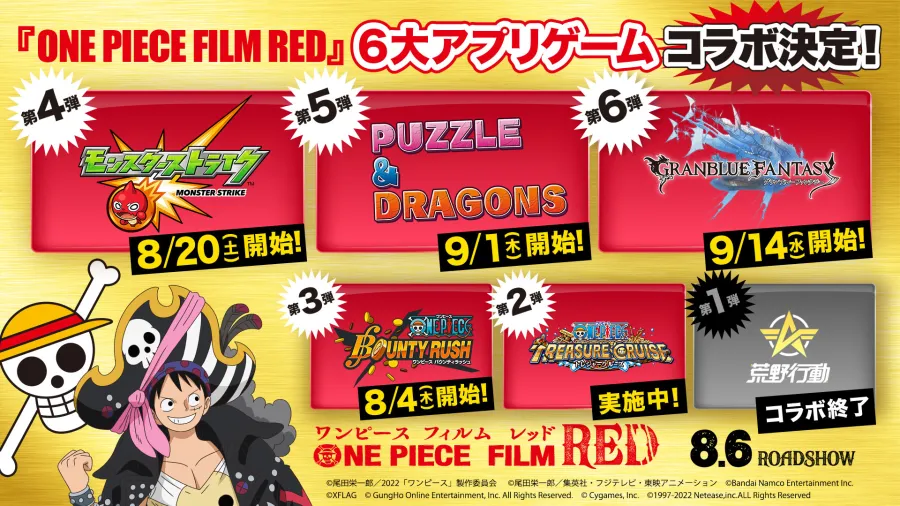
Here’s an unusual one: a collaboration with the manga series One Piece to promote the latest movie, One Piece Film Red, didn’t involve just one game, but six! The collaboration involved two One Piece games – One Piece Treasure Cruise and One Piece Bounty Rush – as well as Monster Strike, Knives Out, Puzzle & Dragons, and Granblue Fantasy.
One Piece is one of the most successful manga/anime brands of the 20th century. The film made the equivalent of $100 million after 46 days after its release and is the highest-grossing movie of 2022 in Japan so far.
What’s interesting here is that the movie didn’t collaborate with any other games except the six mentioned above. This means that games from One Piece’s publisher Jump Magazine, such as Jumputi Heroes, were left out of the campaign.
Joint progression was enabled across all the games in the collaboration other than Knives Out and One Piece Bounty Rush. Players completed collaboration-related missions and dungeons in their respective games, so when a certain amount of tasks had been completed during the event in One Piece Treasure Cruise, players could earn valuable rewards in Monster Strike and vice versa.
In all of the collaborations featuring joint progression, characters from One Piece were naturally introduced as new time-limited characters, quests and special stages. This is impressive, given that all the games involved with the collaboration vary in style and gameplay. As an example, Granblue Fantasy is an RPG with heavy social ements, while Puzzle & Dragons is a Match3 puzzle game.
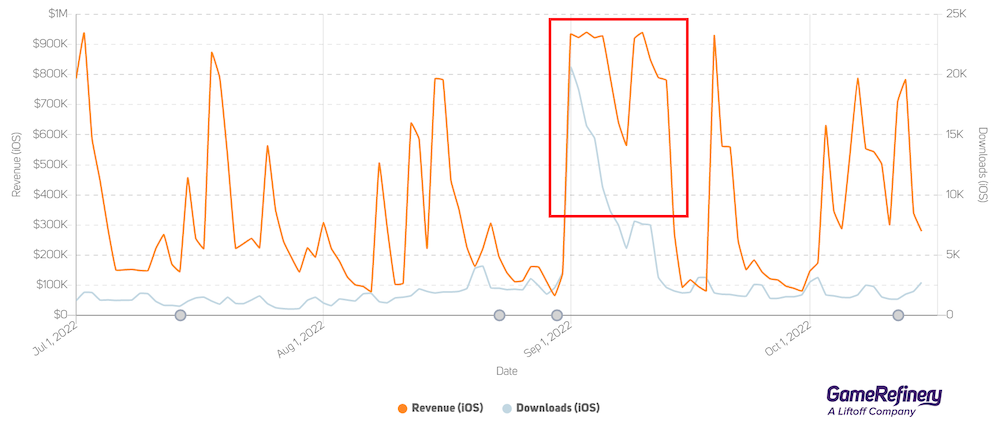
Due to the success of the One Piece film, all of the games involved with the collaboration benefited from new downloads and increased revenue. You can see the huge impact this had on Puzzle & Dragons above, causing an 800% increase in revenue on iOS. If you’re interested in learning more about this collaboration, it’s discussed in greater detail in the GameRefinery August Market Highlights.
Mobile Legends Bang Bang’s collaboration with Kung Fu Panda
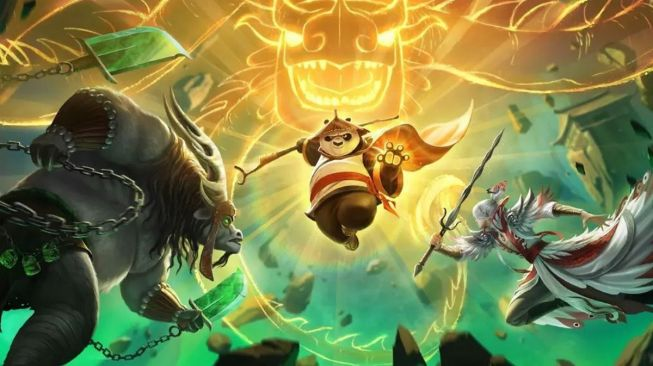
Collaborating with a big brand is no guarantee of success, as Mobile Legends Bang Bang’s collaboration with the animated martial arts comedy film, Kung Fu Panda, proves. Mobile Legends Bang Bang has collaborated with various brands over the years for in-game events including, Star Wars, Transformers, and Hello Kitty, but its collaboration with Kung Fu Panda didn’t perform anywhere near as well.
While there’s no certain way of telling why Kung Fu Panda didn’t get players excited, we can compare it to its last two promotional collaborations: Hello Kitty and the second Transformers collaboration.
Both of these collaborations were highly successful in generating revenue and new downloads due to the way limited-time gachas with exclusive collaboration skins were incorporated into the game’s monetization strategy.
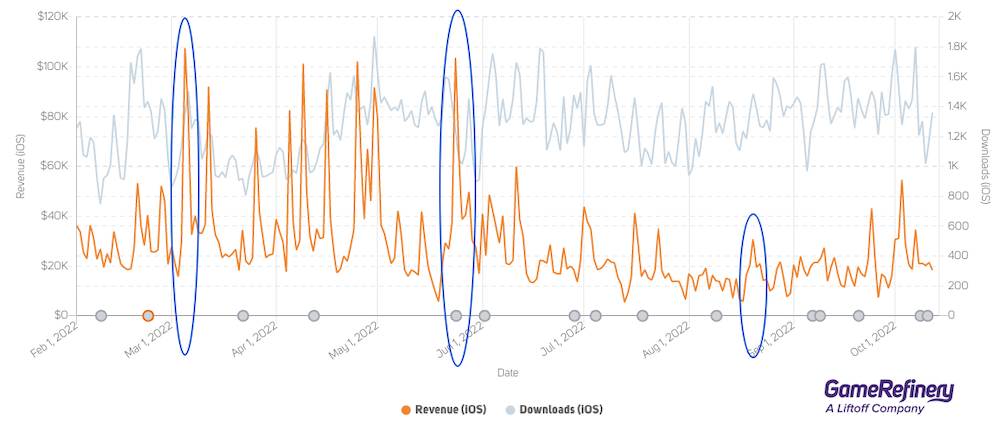
It’s worth noting that the latest Kung Fu Panda film was in 2016, and while there’s a new film coming in 2024, it’s still a fairly dormant franchise for the most part. The collaboration skins weren’t as exciting as Hello Kitty or Transformers which may explain why they didn’t convert into sales. As an example, the main Kung Fu Panda skin was for a hero that’s already a panda, so it doesn’t really add anything different to that character’s appearance.
In the Kung Fu Panda films, Lord Shen is a peacock, but the Lord Shen skin for the Ling hero is just a themed peacock outfit, which players were disappointed with according to YouTube comments for the announcement. The only skin that dramatically changed the appearance of a character was General Kai’s skin for the Bang Bang character Thamuz, but General Kai isn’t a major character in the films, so there’s less of an incentive to purchase the skin.
There were major differences between the three limited-time gachas used across all three collaborations. First, the Hello Kitty and Transformers skins cost 225 gems for one gacha pull and 2250 gems for ten pulls in comparison to Kung Fu Panda’s 100 gems for one pull and 1000 gems for ten pulls.
The Hello Kitty and Transformers gacha pools had different mechanics and also looked more appealing and engaging. The Hello Kitty gacha was heavily themed with striking grab machine visuals with a piggy bank system, bingo bonus mechanics on every ten pulls, four Hello Kitty skins, and many others from the game. Mobile Legends Bang Bang’s highly successful auto-chess mode also had its own limited time gacha for separate autochess skins.
Compare that to the reasonably bland Kung Fu Panda gacha screen, which only had three collaboration skins and no other special skins from the game. Overall, this means there was less of an incentive for players to engage with the Kung Fu Panda collaboration as the rewards didn’t justify multiple gacha pulls.
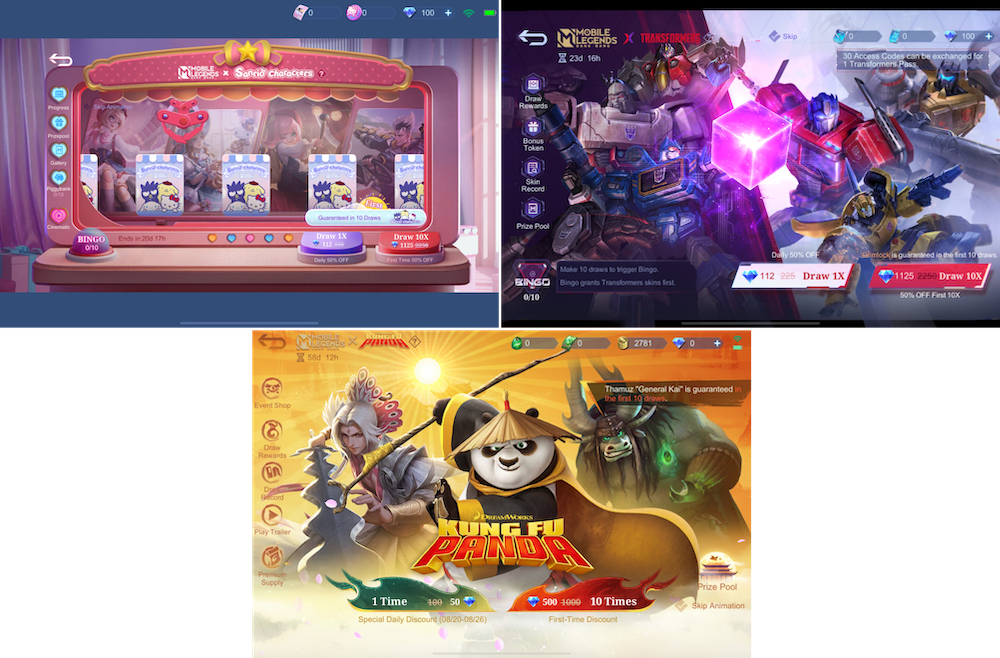
Finally, the special/collab limited-time skin collectibles album was moved to a different location in the game’s menu. This made it much more difficult to find, especially as the gacha page for the Kung Fu Panda collaboration was missing the direct link to the collectible album, something that was present in the Hello Kitty and previous Transformers collaboration.
Collectible albums are a great engagement mechanic as they give players a sense of reward for playing gachas as they’re able to look back at the prizes they’ve won. In this case, the poor visibility for Kung Fu Panda’s collectible album meant that some players might have missed it and therefore wouldn’t have been incentivized to engage with the limited-time gacha as often.

PUBG Mobile’s collaboration with Neon Genesis Evangelion
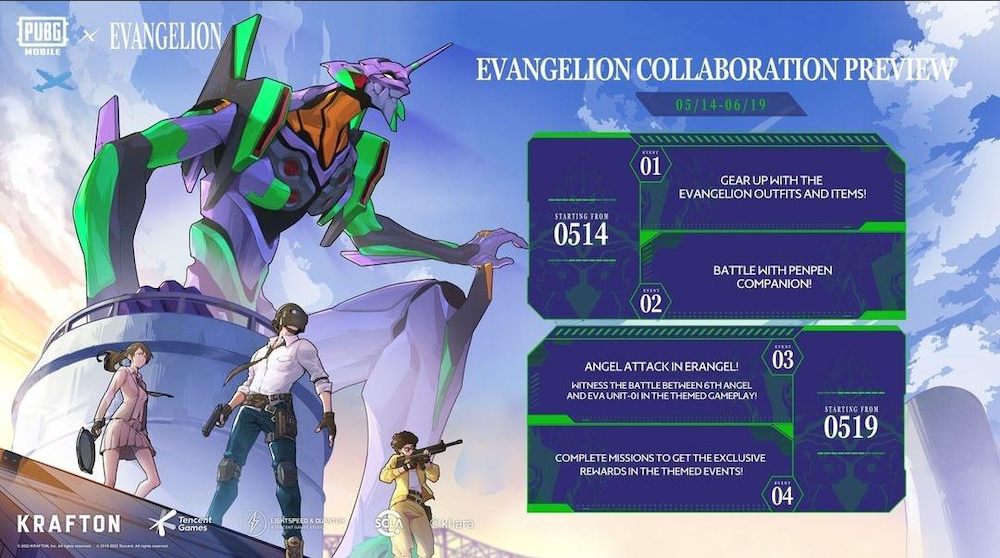
What happens when one of the mobile market’s most successful battle royale games partners with one of the biggest names in anime? Not only was PUBG Mobile’s collaboration with Neon Genesis Evangelion a great success in terms of the revenue and downloads it generated for the game, but it’s also a fantastic example of how to introduce new content and put a fancy twist on existing gameplay mechanics.
Elements and enemies from the anime were implemented into the main battle royale mode for PUBG: Mobile. As an example, a giant 6th Angel mech was roaming around the map and would shoot any players in sight, adding a unique twist to the typical battle royale gameplay style that players are familiar with. The map was also updated with landmarks from the anime, which players had to explore to complete PUBG Mobile’s Cycle Memories (collectibles album).
So, how was all of this monetized? F2P players had a chance to earn themed rewards from the anime by simply playing the primary gameplay mode, which rewarded exploration points that could be used in the collaboration side event. These points unlocked prize milestones and players had the chance to unlock themed character skins from the anime. Visually, the skins were very impressive and featured various designs from the anime.
Most of the themed skins were temporary and would automatically be removed from players’ inventories at the end of the collaboration, but players could turn these into permanent skins by purchasing them. Players with excess exploration points could spend them in a gacha draw once all of the reward events’ milestones were reached. The gachas featured more unique skins from Neon Genesis Evangelion, which incentivized players to keep playing the primary gameplay mode to unlock additional points.
Alongside the changes to the primary gameplay mode in PUBG: Mobile, the collaboration also introduced two minor side events which followed the same progression formula: play matches and complete challenge milestones for themed rewards. The vast amount of collectible cosmetics offered here might explain why the game enjoyed such a high revenue spike.
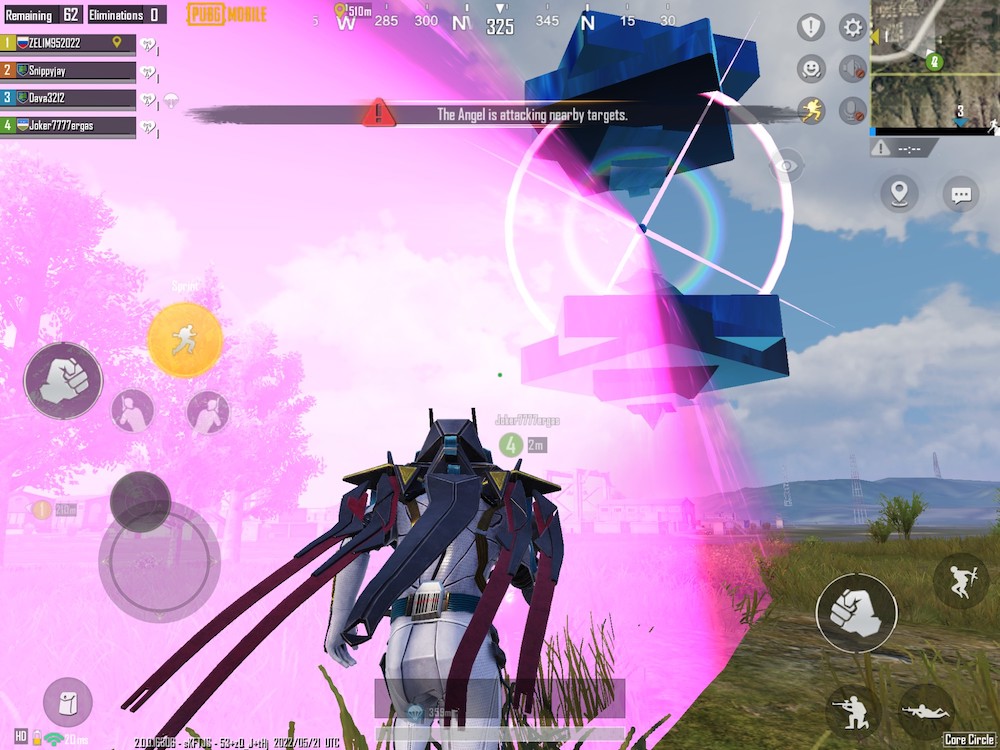
So, how was all of this monetized? F2P players had a chance to earn themed rewards from the anime by simply playing the primary gameplay mode, which rewarded exploration points that could be used in the collaboration side event. These points unlocked prize milestones and players had the chance to unlock themed character skins from the anime. Visually, the skins were very impressive and featured various designs from the anime.
Most of the themed skins were temporary and would automatically be removed from players’ inventories at the end of the collaboration, but players could turn these into permanent skins by purchasing them. Players with excess exploration points could spend them in a gacha draw once all of the reward events’ milestones were reached. The gachas featured more unique skins from Neon Genesis Evangelion, which incentivized players to keep playing the primary gameplay mode to unlock additional points.
Alongside the changes to the primary gameplay mode in PUBG: Mobile, the collaboration also introduced two minor side events which followed the same progression formula: play matches and complete challenge milestones for themed rewards. The vast amount of collectible cosmetics offered here might explain why the game enjoyed such a high revenue spike.
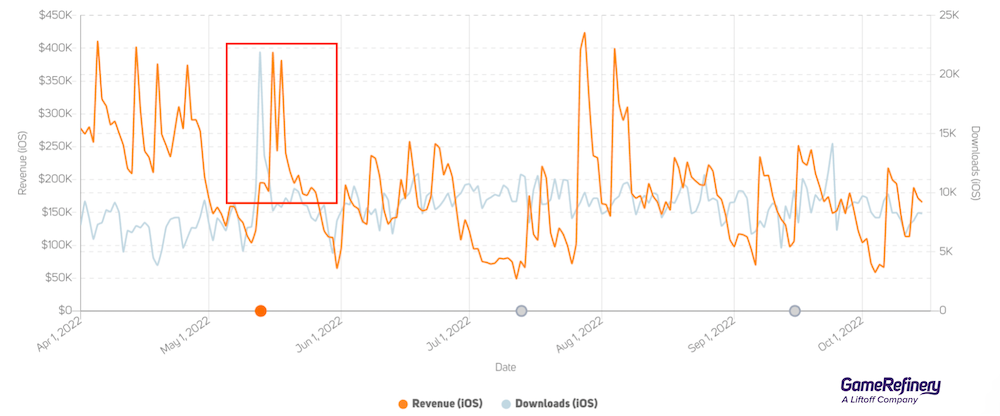
Cookie Run: Kingdom collaborates with BTS
Cookie Run: Kingdom classes itself as an ‘RPG and city-builder hybrid,’ which means it has plenty of options for introducing new gameplay elements and monetization features. It’s heavily focused on gacha mechanics due to the collectible nature of the game, where players collect cookies (characters) using the game’s gacha mechanics to enter into battles and earn rewards.
Starting in October this year, the game collaborated with the Korean boy band, BTS, for a massive collaboration taking place over 100 days! In addition to Cookie Run Kingdom’s auto-battle RPG core gameplay, the collaboration introduced a new game mode combining rhythm game elements with a three-lane endless runner. Seeing two distinct game modes combined in this way was an impressive highlight of the event, especially as the focus on rhythm/endless runner gameplay would alternate according to the background song (such as the gameplay switching when the song moves into the chorus).
There are performance stages for each BTS song featured (Dynamite, Butter, MIC Drop, Permission to Dance, Mikrokosmos, Yet To Come,) with the songs playing over the top of the rhythm game and endless runner section. To incentivize repeated plays, each song had its own set of achievements to clear and players that managed to complete them would be rewarded with a specific title using lyrics from that song.
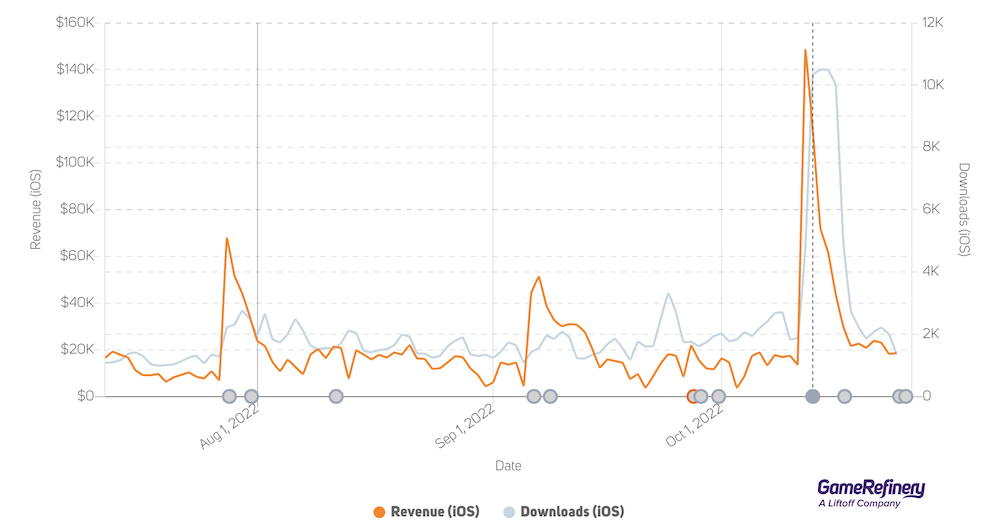
The collaboration also introduced the seven members of BTS into the game as characters. Each member had skins based on their appearance in music videos and Cookie Run marketing videos, where BTS members were asked to design and draw their own Cookie Run Kingdoms. This resulted in a massive selection of 94 decors to collect. Characters, skins and decors could be unlocked through a themed BTS gacha that required a special event currency, obtainable through event tasks, playable stages and also through IAP offers.
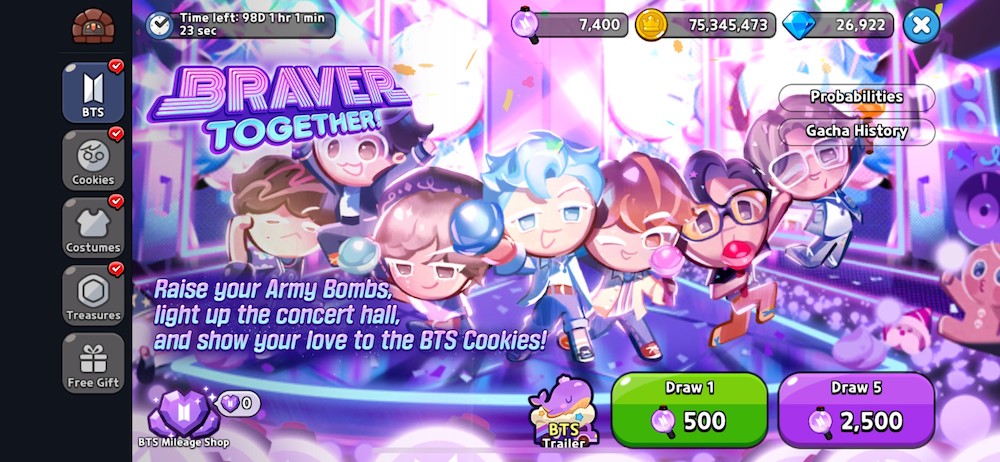
Another layer of monetization was added into the collaboration through a special hang-out area for the BTS characters. This was a unique area with the appearance of a fancy truck that could be stylized through new decors unlocked via the BTS gacha.
Special themed tasks were also added to Cookie Run Kingdom, which rewarded players with event currency. Players could also purchase a special BTS-themed Battle Pass and there were plenty of limited-time IAP offers to choose from, too. Finally, to incentivize new downloads for the game, Cookie Run Kingdom has invested a lot of time into promoting the campaign across social media and other formats while a daily login bonus encouraged repeated plays.
In addition to BTS promo videos, the Riddle Kingdom part of the collaboration tasked players with solving emoji puzzles on social media to earn clues that could be written into the game as part of a code to unlock premium currency and event gacha currency. Players could also win a collaborative Cookie Run Kingdom and BTS artbook as a prize in real life.
Are you interested in adding promotional collaborations to your mobile game?
In addition to the five examples above, you can find detailed breakdowns of in-game collaboration events for thousands of games across different genres and markets on the GameRefinery platform. Just search for the game you’re interested in learning more about and use the ‘Update History’ tab to browse new features that have been added into the game as part of promotional collaboration events.
Similar to what we’ve done above, by correlating these updates with spikes in revenue and downloads, you can work out which collaborations have been a hit with players and others that haven’t been as successful. Use these learnings to shape how you introduce promotional collaboration events into your game in the future!

